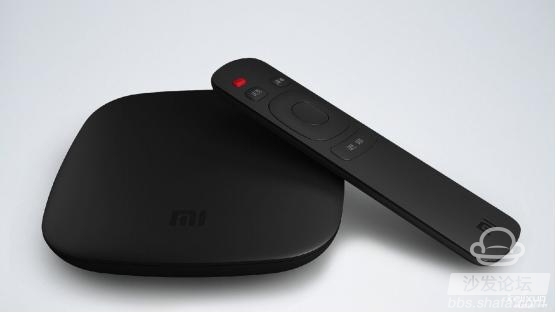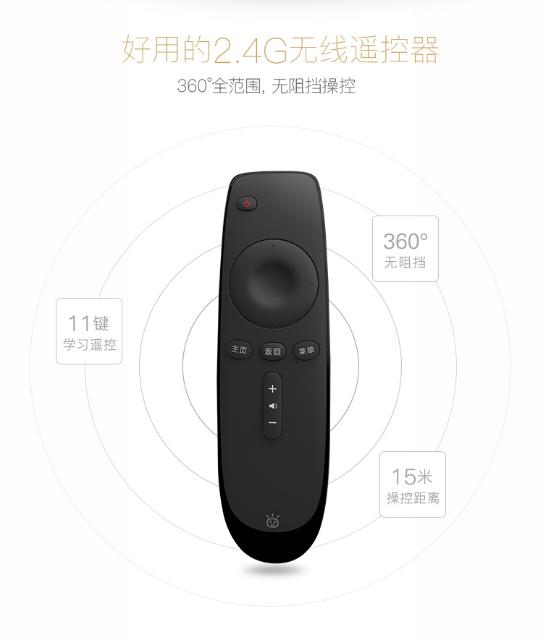In the course of using the TV box, it is nothing more than a remote control that comes into contact with us. How does the remote control hold the tactile feedback in the hand? Is the switch platform sensitive? Is the key operation simple? These are the problems that we should consider when choosing an internet set-top box, and that we are most likely to be overlooked and misled by the advertisements of businesses! So, what remote control experience is the best, the easiest to use, and 360 degree coverage can be achieved after getting started? Xiao Bian has had a glimpse of the TV box remotes today:
At present, mainstream network set-top boxes on the market all use 11-key (partially 12-key, "pop-up" or "voice" buttons) remote controllers. As an essential accessory for TV boxes, we often watch TV programs with our family. When it is used, it is the most frequently used. So what kinds of remote controls are available in the market?
In general, the remote controllers on the market can be classified into the following three categories according to the signal band classification:
Infrared remote control
The basic principle of the infrared remote controller is to convert infrared light into a digital signal that can be recognized by the television. By transmitting digital signals to control the television equipment, the procurement cost is low. Due to the limitation of infrared light, the infrared remote controller cannot pass through obstacles for remote control or remotely control the device from a large angle, and the anti-interference ability is not very good.

Currently used infrared remote control boxes are: millet box, Lynx box, music box, Huawei box, etc., almost 90% of the brand box with infrared remote control. Like the traditional digital button remote control, the drawbacks of the infrared remote control determine that it will not be so accurate in daily life. When you walk through a person in front of the remote control when you are cutting the desk, pressing the remote control will not help. The kind of anger and chase drama person you will understand!
2.4GHz wireless remote control
Wireless remote control is gradually popularized in TV remote controllers. The 2.4G remote control signal transmission method successfully solves the drawbacks of infrared remote control, and can remotely control the TV from various angles in the house. 360-degree no dead angle, full three-dimensional coverage is the advantage of 2.4G remote control, but also the current best use of a remote control type.

Perhaps netizens will ask, why most manufacturers still use infrared remote control instead of 2.4GHz wireless remote control? Xiaobian tells you the answer, there is only one reason, 2.4G purchase cost is too high, the same 11-key remote control, 2.4G remote control than the infrared remote control production cost twice as expensive.
![]()
Bluetooth remote control
The advantage of the Bluetooth remote control is that it can achieve a completely independent signal transmission channel by pairing with the TV, thereby avoiding interference between wireless signals of different devices. Since the Bluetooth technology is paired one-on-one, the TV box connected to the remote controller can no longer be connected to Bluetooth gamepads and Bluetooth speakers. The Bluetooth technology is just a supplement to the 2.4GHz technology.

For now, Bluetooth remote control also has some problems, such as the need to manually pair the remote control and the device when it is used for the first time, the device has a high operation delay, the cost is high, etc. These are problems that Bluetooth needs to solve. Currently, Bluetooth-enabled TV boxes can be paired with Bluetooth remote controllers. Accessories such as millet boxes are infrared remote controllers, and Bluetooth remote controllers need to be purchased by other vendors.
to sum up:
Now that the mainstream TV boxes are almost homogenous in hardware and software, in order to gain a competitive advantage in the market, they must also pay attention to the individual needs of consumers. Infrared remote controllers currently use the most people, experience on the law; 2.4G remote control with its inherent advantages, will become the future of network set-top boxes and smart TV mainstream accessories; Bluetooth remote control is just a supplement to 2.4GHz technology, because now Most digital devices support the Bluetooth function, and Bluetooth remote control devices are also more abundant, but manual pairing and the natural disadvantage of high device operation delays make people love and hate.
At present, mainstream network set-top boxes on the market all use 11-key (partially 12-key, "pop-up" or "voice" buttons) remote controllers. As an essential accessory for TV boxes, we often watch TV programs with our family. When it is used, it is the most frequently used. So what kinds of remote controls are available in the market?
In general, the remote controllers on the market can be classified into the following three categories according to the signal band classification:
Infrared remote control
The basic principle of the infrared remote controller is to convert infrared light into a digital signal that can be recognized by the television. By transmitting digital signals to control the television equipment, the procurement cost is low. Due to the limitation of infrared light, the infrared remote controller cannot pass through obstacles for remote control or remotely control the device from a large angle, and the anti-interference ability is not very good.

Currently used infrared remote control boxes are: millet box, Lynx box, music box, Huawei box, etc., almost 90% of the brand box with infrared remote control. Like the traditional digital button remote control, the drawbacks of the infrared remote control determine that it will not be so accurate in daily life. When you walk through a person in front of the remote control when you are cutting the desk, pressing the remote control will not help. The kind of anger and chase drama person you will understand!
2.4GHz wireless remote control
Wireless remote control is gradually popularized in TV remote controllers. The 2.4G remote control signal transmission method successfully solves the drawbacks of infrared remote control, and can remotely control the TV from various angles in the house. 360-degree no dead angle, full three-dimensional coverage is the advantage of 2.4G remote control, but also the current best use of a remote control type.

Perhaps netizens will ask, why most manufacturers still use infrared remote control instead of 2.4GHz wireless remote control? Xiaobian tells you the answer, there is only one reason, 2.4G purchase cost is too high, the same 11-key remote control, 2.4G remote control than the infrared remote control production cost twice as expensive.
Bluetooth remote control
The advantage of the Bluetooth remote control is that it can achieve a completely independent signal transmission channel by pairing with the TV, thereby avoiding interference between wireless signals of different devices. Since the Bluetooth technology is paired one-on-one, the TV box connected to the remote controller can no longer be connected to Bluetooth gamepads and Bluetooth speakers. The Bluetooth technology is just a supplement to the 2.4GHz technology.

For now, Bluetooth remote control also has some problems, such as the need to manually pair the remote control and the device when it is used for the first time, the device has a high operation delay, the cost is high, etc. These are problems that Bluetooth needs to solve. Currently, Bluetooth-enabled TV boxes can be paired with Bluetooth remote controllers. Accessories such as millet boxes are infrared remote controllers, and Bluetooth remote controllers need to be purchased by other vendors.
to sum up:
Now that the mainstream TV boxes are almost homogenous in hardware and software, in order to gain a competitive advantage in the market, they must also pay attention to the individual needs of consumers. Infrared remote controllers currently use the most people, experience on the law; 2.4G remote control with its inherent advantages, will become the future of network set-top boxes and smart TV mainstream accessories; Bluetooth remote control is just a supplement to 2.4GHz technology, because now Most digital devices support the Bluetooth function, and Bluetooth remote control devices are also more abundant, but manual pairing and the natural disadvantage of high device operation delays make people love and hate.